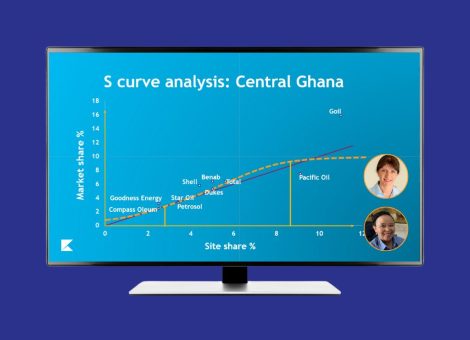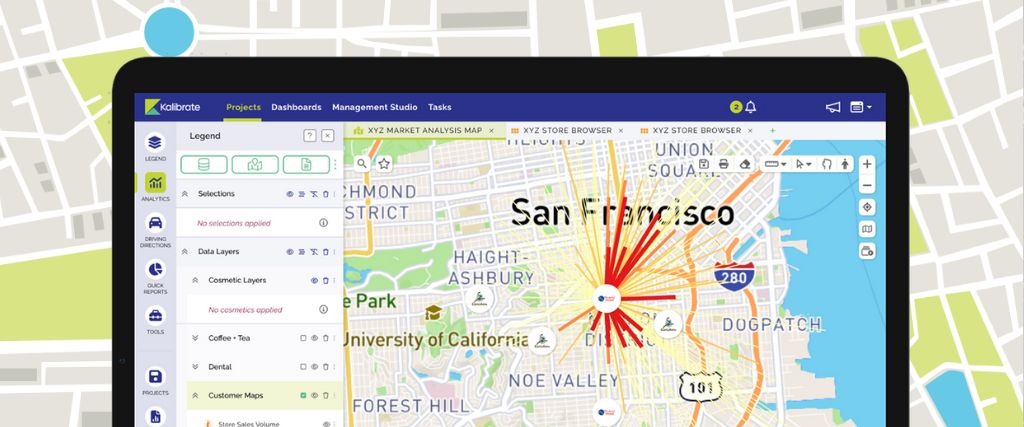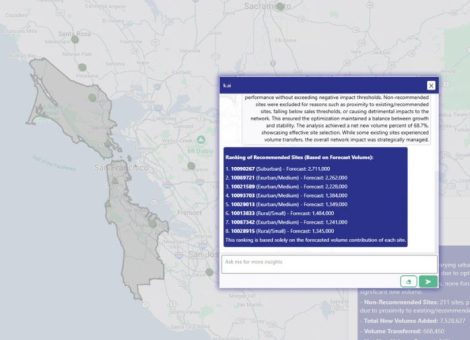Kalibrate Location Intelligence 2.0: Deep dive with product development
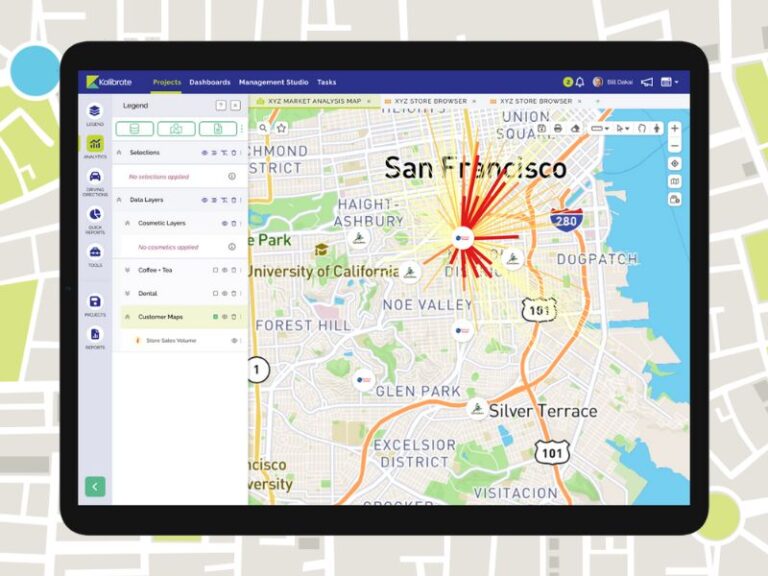
Tell us about some of the enhancements you’re most excited about in the next generation of Kalibrate Location Intelligence 2.0 (KLI 2.0).
Dustin Stancil: The improvements to the user interface (UI) are huge. KLI 2.0 will feature an extensive redesign of the user interface. KLI has been a cornerstone for our clients over many years, this effort demanded meticulous planning and execution, driven by our commitment to deliver a user interface that not only positions us competitively in today’s market but also distinguishes us from our competitors.
A consistent design language has been implemented throughout the UI. This uniformity helps users become more accustomed to KLI while also enhancing its looks. All modules use the same icons, typefaces, and color schemes, which improves the experience’s visual coherence.
The revamped user interface enables us to deliver an enhanced user experience with streamlined workflows. Notable improvements include the ability to filter data layers directly from the legend, allowing users to precisely select the layers they want displayed on the map. We’ve also integrated an analytics module that consolidates sales, recapture, and relocation forecasts into a central location. Additionally, the Info Box has evolved into the Activity Hub, offering users greater customization options when interacting with specific points on the map.
We’ve de-cluttered the interface to provide a more focused and distraction-free user experience. The amount of irrelevant data and alternatives is reduced, allowing users to focus on their activities without being sidetracked.
On navigation, The streamlined navigation is one of our biggest upgrades. To ensure a more logical flow and make it simpler for users to discover what they need swiftly we reorganized primary navigation. As a result, users will be able to spend their time a lot more efficiently.
On maps, we are transitioning from Bing to Google Maps as our underlying mapping platform. This upgrade will empower users to view up to four maps simultaneously and import data layers onto their chosen maps. We’re also introducing a projects module, enabling users to bundle multiple maps into cohesive projects. This feature facilitates sharing with other users, commenting, and tracking usage trends.
Salman Ahmed: A touch-friendly web application is an exciting addition to KLI, marking a departure from our previous mobile offerings. All platform enhancements have been developed with functional parity in mind, so whether users are accessing on desktop, tablet, or mobile, they’ll have the same feature set available.
How did the development process work?
Dustin: Our primary objective was to enhance the existing platform based on customer requests and feedback. We recognized that our current system, KLI 1.0, had a robust set of functionalities but required improvements in terms of user-friendliness and efficiency.
To address this, our initial focus for KLI 2.0 was to retain all the existing features while completely redesigning the user interface and optimizing the overall user experience. The goal was to minimize the number of clicks required for users to accomplish their tasks. We identified that KLI users often had to navigate complex scenarios and pathways, which posed a challenge for new users. To facilitate the smooth transition of clients from other platforms and accelerate their proficiency with our system, we knew we had to make it more user-friendly.
In 2022, our first step was to bring aboard a senior designer who dedicated 100% of their time to crafting user paradigms that would enhance user-friendliness. We consistently sought feedback from both our internal team members and clients, many of whom had over 20 years of experience in Location Intelligence. This combination of fresh design thinking and deep industry experience allowed us to create a truly exceptional user experience.
We spent a lot of time interviewing clients to gather insights into their likes and dislikes regarding the platform. It was crucial for us to include a diverse range of clients, including power users and those less familiar with KLI 1.0. One of our key areas of focus during these interviews was the sales forecasting functionality, given its importance within our system. We recognized that perfecting this aspect required numerous iterations to ensure it met our client’s needs, and this is something we are still working on improving today.
You mentioned the mobile functionality above. How is the next generation of KLI different to versions clients have used previously on mobile devices?
Salman: Our long-term strategy for KLI Mobile entails a dual approach. In conjunction with the overall redesign of KLI, we are concurrently developing a touch-friendly web application. This web app will provide users with the ability to access the same full suite of features but with the convenience of touch-based interactions on their mobile devices. We anticipate that this will greatly enhance the user experience.
Additionally, the native mobile application currently in use, KLI Mobile, will enhance the support of field-based surveyors. This shift is geared towards enabling them to download offline packages, a functionality that may not be easily achievable through a web app.
There seems to be a lot of thought about the collaboration aspect – within teams, across teams, across an organization – what’s the thinking behind the enhancements to projects?
Dustin: Projects represent a substantial upgrade to the existing saved maps feature in KLI 1.0. This enhancement allows users to consolidate multiple maps into a unified project. We are excited about this crucial addition l because we recognize that our client base spans a diverse range of organizations in terms of size and workforce. Even if certain features aren’t fully utilized today, it’s essential for organizations to have a platform that accommodates all sizes and can scale alongside their growth. ‘Scalability’ is a pivotal concept underpinning this initiative.
With Projects, users can save maps under a project name, provide descriptions, share them selectively with specific individuals, and engage in comment-based discussions within the project. Additionally, you can track usage trends within a project, allowing you to monitor who has accessed it and when they last viewed it.
We anticipate that organizations will leverage this feature as a ‘one source of truth’ across their entire operations. This, in turn, will significantly enhance the ease of reporting and sharing data and ideas up the decision-making chain.
What’s next for the development team? Can you share anything in the pipeline?
Dustin: Our primary focus is to establish a comprehensive system parity across all legacy Location Intelligence products. This will entail aligning features such as Territory Management, Nearby Trip Analysis, and other extensively utilized functionalities from Trailblazer and Site Intel that are currently not integrated into KLI 1.0.
Salman: We are actively exploring enhancements for our Competitive Insights product. This includes a redesign and improvement of the existing Competitive Insights reporting system, the creation of new reports offering insights into chain market share and location analysis within client-defined market sizes, and the development of dynamic market optimization tools to assist organizations in determining the optimal number of locations for their target markets. Our Competitive Insights product, bolstered by mobility data, holds great potential, and we are making substantial investments in its development.
Read more articles about:
Location intelligenceSubscribe and get the latest updates
You may unsubscribe from our mailing list at any time. To understand how and why we process your data, please see our Privacy & Cookies Policy
Related resources
Location intelligence
AI in location intelligence: See it in action
See videos and screen captures of how AI has been integrated into the KLI platform.
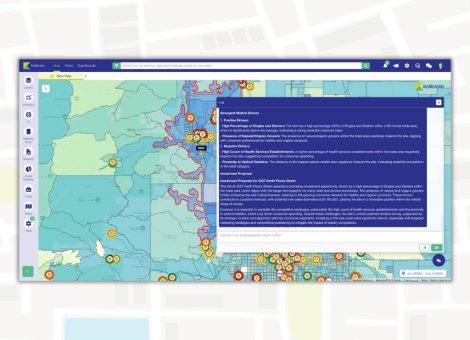
Fuel pricing
Middle East / Africa - Fuel network planning: Critical insights
Join our team as we look at the key points of insight that fuel network planners need to consider when making...
